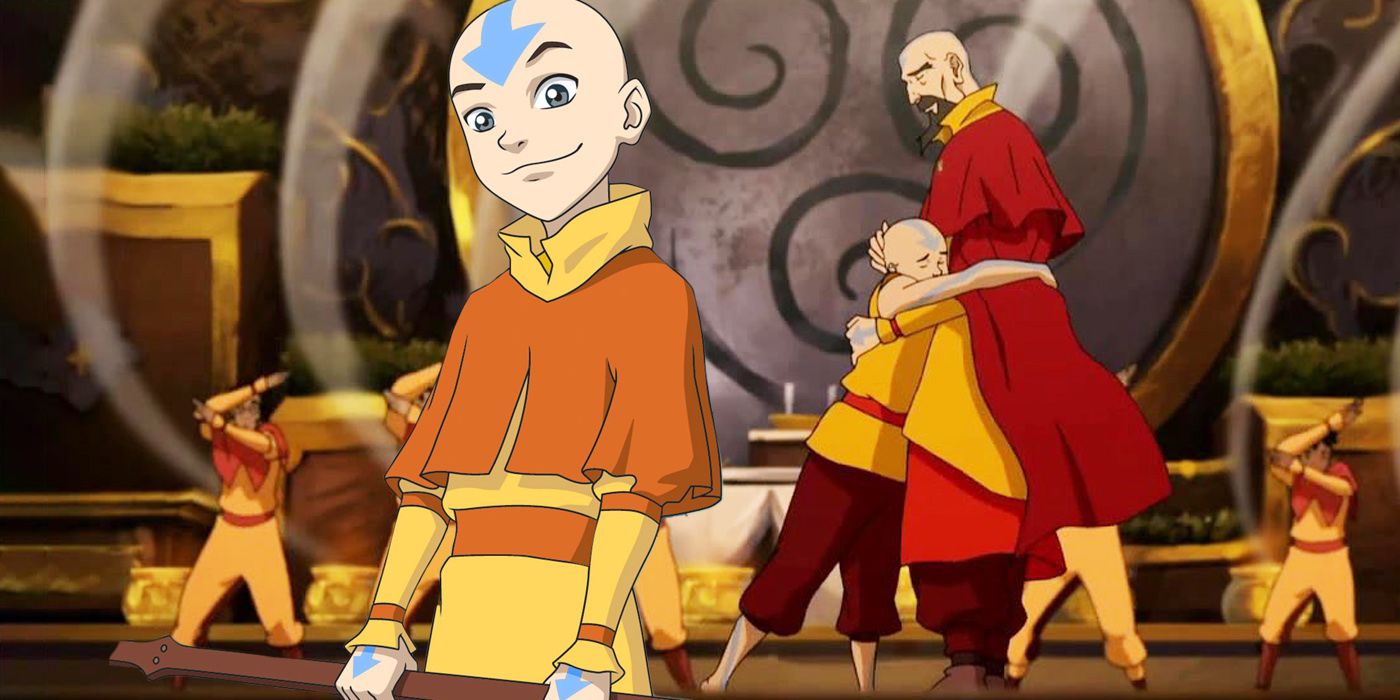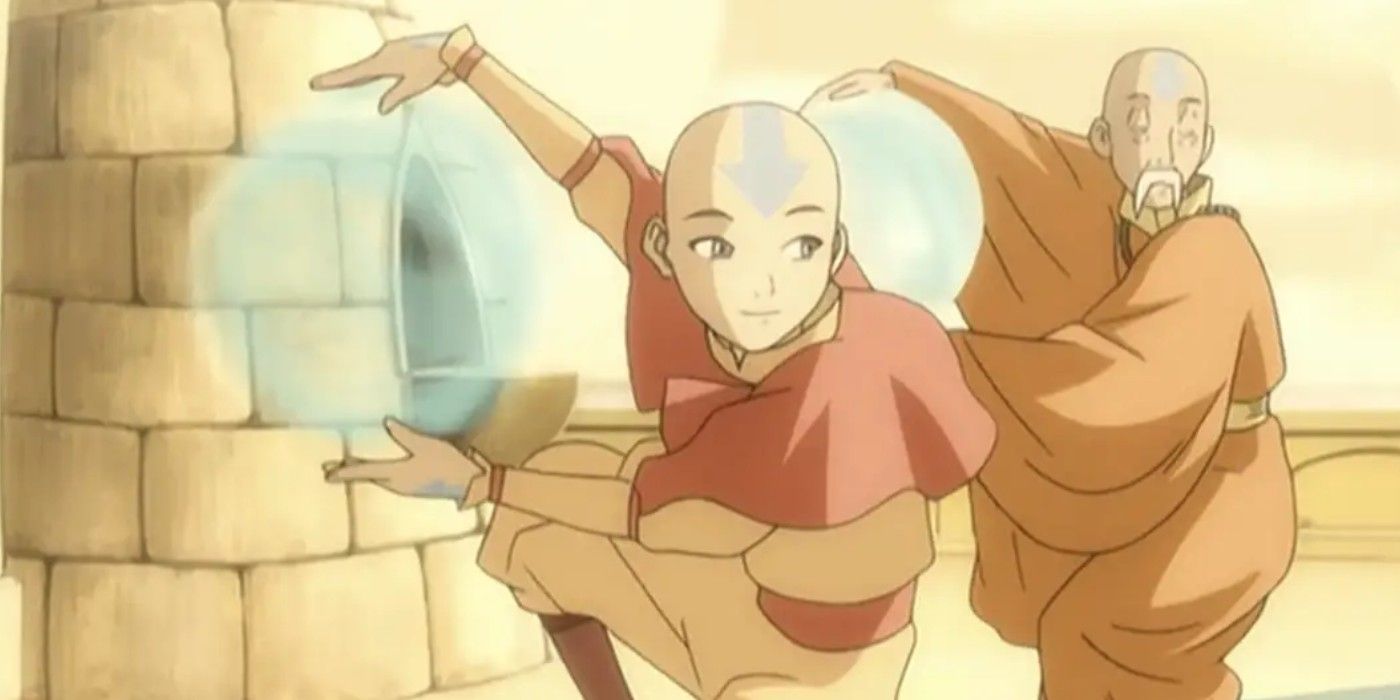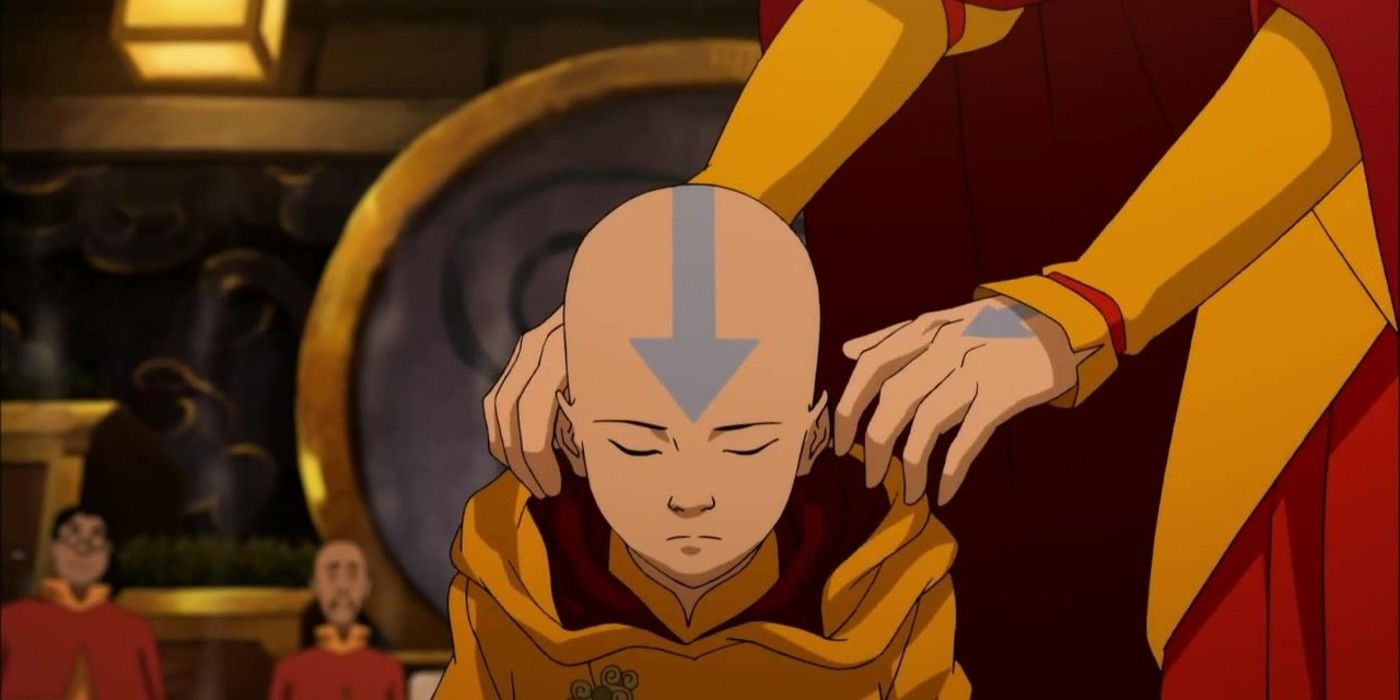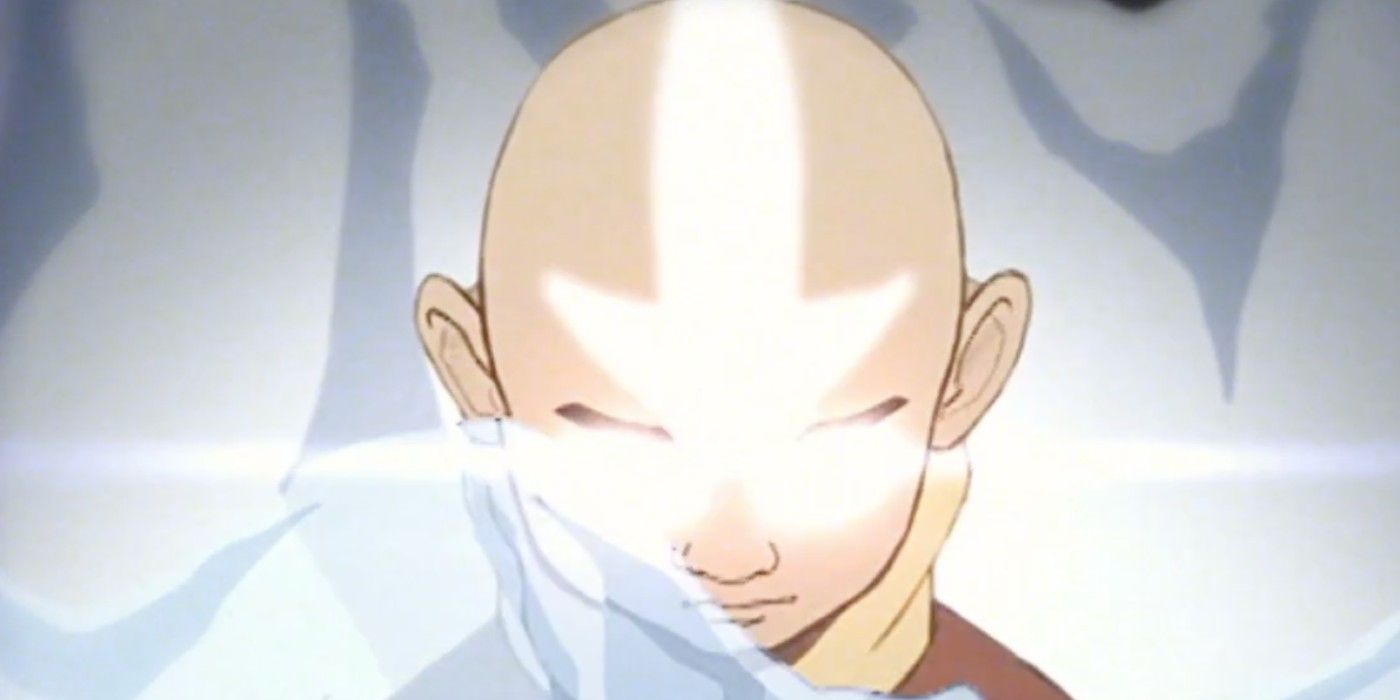In Avatar: The Last Airbender, Aang’s arrow tattoos are closely associated with his identity both as the Avatar and the last of the Air Nomads. They are a defining part of his appearance, which prompted many hilarious disguises throughout the series as he tried to remain hidden from the Fire Nation. However, there is much more to them than just aesthetics. The tattoos have deep cultural significance for the Air Nomads; in the Avatar: The Last Airbender sequel comics Aang discovers that he has a fan club, and is shocked and offended to see that they've copied his tattoos despite being neither Air Nomads or airbenders.
The tattooing tradition was inspired by the first airbenders, the sky bison, who naturally have arrows in their fur. Air Nomad culture became centered around the lessons that the sky bison taught them. Although the Air Nomads - true to their name - were wanderers, they established four air temples for their people and the sky bison to gather. They made up the smallest of the other nations, and lived a peaceful life in tune with nature.
Since Aang was the only airbender alive during the original show, viewers get glimpses into the life and culture of the Air Nomads of the past and how Aang earned his tattoos. The Legend of Korra expands from there, showing a more in depth look at the Air Nomad teachings and the significance of the tattoos. Here's what the two Avatar shows revealed about the true meaning behind the arrow tattoos.
Air Nomads Get Tattoos Once They Master Airbending
In order to achieve airbending mastery, an Air Nomad must go through thirty-six tiers of training or create a new airbending technique. This training involves centering oneself and taking the path of least resistance to direct chi through the body. Airbenders fight defensively, using their enemies’ strength against them and quickly maneuvering to avoid attacks.
Another component of airbending mastery is spirituality, and the Air Nomads value this greatly. Meditation is critical to becoming proficient at airbending because it helps benders focus internally and connect to their spiritual side, with some even capable of entering the Spirit World. Aang uses meditation to speak with Avatar Roku for guidance, and the fact that his tattoos glow while he is in the Avatar state further demonstrates his connection to the Spirit World and his past lives. Jinora also uses meditation to enter the Spirit World, and to project her spirit for other characters when she needs to contact them from a distance.
Although Aang had not completely finished his training, he created the “air scooter,” fulfilling the criteria to become a master and receive his tattoos. Jinora on the other hand did complete her training and guided Korra into the Spirit World for the first time, demonstrating her mastery and earning her tattoos as well.
The Tattoo Ceremony In Legend of Korra
One of the most moving moments of The Legend of Korra is Jinora’s tattoo ceremony. The Last Airbender gives brief flashbacks of Aang at the Southern Air Temple, where he already had his tattoos at a young age because of his natural airbending talent, so his ceremony is never mentioned. It is especially significant that Jinora’s ceremony is included because she replaced Aang as the youngest Air Nomad to become a master. Aang mastered airbending at age 12, while Jinora achieved it at age 11. Her father, Aang's son Tenzin, had previously resisted Jinora's pleas to get her own tattoos and become a fully-fledged airbending master, so the ceremony is an emotional moment for Tenzin and Jinora as he finally accepts that his oldest daughter is growing up.
The ceremony includes specific rituals associated with airbending. First, Jinora’s head is shaved, and she receives her arrow tattoos. Next, surrounded by friends, family, and important societal figures, she steps forward from a line of Air Nomads. Tenzin speaks about her accomplishments, the future of the Air Nomads, and how she will lead using her airbending mastery. She then removes her hood, revealing her new appearance. Lastly, the other Air Nomads move the smoke around pots of incense, sending it swirling through the room and ringing wind chimes around the temple.
Jinora is the first to achieve airbending mastery in a generation, so her tattoo ceremony symbolizes hope for the future and a rebirth of the Air Nomad lifestyle. Conversely, since Aang was the only airbender left at the time, his tattoos were symbolic of the destruction of the Air Nomads and their culture, as well as his vow to avenge them while carrying on their way of life. He paved the way for his granddaughter’s success, and she seems to have inherited his natural talent and spirituality.
The Tattoos Help The Flow Of Chi
Air Nomad tattoos follow the direction that chi moves through the body. It begins at the base of the spine moving towards the forehead, from the shoulders out to the hands, and from the hips to the feet. Chi is the internal energy that powers bending, so every bender must learn how to control and direct it. The arrows on Aang and Jinora serve as a guide for the airbending motions and where they must concentrate their chi.
Chakras are another component of controlling one’s chi, acting as pools for it to gather in the body. When Aang’s back is injured after Azula shoots him with lightning, one of his chakras becomes blocked, interrupting the flow of chi. This prevents him from returning to the Avatar state, and his bending abilities greatly suffer. His tattoo is also damaged, as a physical representation of his internal and spiritual injury. Aang regains his connection to the Avatar state once he falls into a rock on the spot where he was hurt, unlocking the chakra.
Chi is also a spiritual energy, since it is found inside every bender and joins all living things. This idea is explored further in both The Last Airbender and The Legend of Korra, when Aang uses his chi to connect with the roots around him, leading him to Appa and Momo in the Foggy Swamp, and when Jinora focuses her chi to sense Korra in the same location. Their tattoos exemplify their spiritual connection to the people and nature around them through the use of chi.
It is interesting to consider the similarities between Aang’s journey as an airbending master in Avatar: The Last Airbender and Jinora’s in The Legend of Korra. Both went through the same tiers of training, although they achieved mastery in different ways, and both faced a world in turmoil after they received their tattoos and were pivotal in bringing about balance. Even the tattoo ceremony was a display of how much Jinora resembled a young Aang. Perhaps he would have lived a similar life to Jinora had he not been the Avatar, but at the same time, Aang’s path is what shaped her future and her relationship with Korra.




